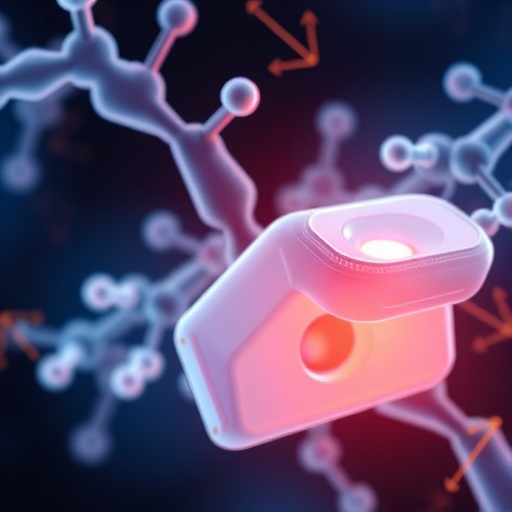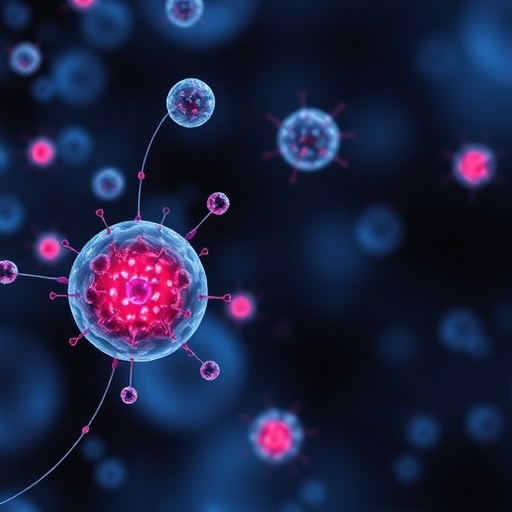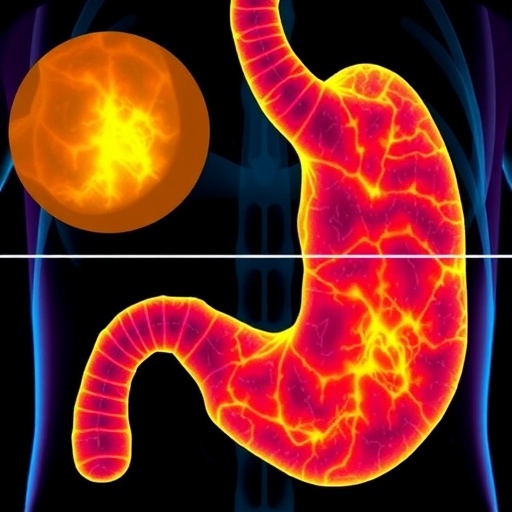
Lactic acid, once dismissed as a mere metabolic byproduct of glycolysis, has emerged as a potent and multifaceted regulator within the intricate landscape of tumor biology and immune system interactions. From its initial discovery in 1780 by Carl Wilhelm Scheele to recent revelations regarding histone lactylation reported by Zhao et al. in 2019, this seemingly simple metabolite has revealed a profound biochemical versatility. Lactic acid operates far beyond its classical role in pH modulation; it signals through specific G-protein-coupled receptors, modifies proteins post-translationally, and dynamically shuttles between cellular compartments and neighboring cells. This expanding understanding is redefining lactic acid’s position from metabolic detritus to a central mediator in cancer progression and immune evasion.
Within the tumor microenvironment (TME), the metabolic reprogramming of cancer cells towards high glycolytic flux results in significant lactic acid and proton export, chiefly via monocarboxylate transporter 4 (MCT4). This export acidifies the extracellular space to a pH estimated at 6.5 to 6.8, profoundly impacting surrounding cells and molecular processes. Acidification not only degrades the extracellular matrix, facilitating invasion and metastasis, but also impairs the efficacy of chemotherapeutic drugs, particularly weak-base agents, by protonation-induced neutralization, which reduces their cellular uptake. This acidic milieu thus creates a physical and biochemical barrier against conventional therapies, presenting a formidable challenge for oncologists.
Paradoxically, cancer cells are adept at recycling the very lactic acid they expel. Through monocarboxylate transporter 1 (MCT1), tumor cells re-import lactate to fuel mitochondrial oxidative metabolism. This lactate utilization fosters oxidative phosphorylation within the tricarboxylic acid (TCA) cycle and promotes NADPH production via isocitrate dehydrogenase 1 (IDH1), contributing to redox balance and anabolic processes required for sustained proliferation. Notably, lactate also stimulates post-translational lactylation of DNA repair proteins such as NBS1 and MRE11. This lactylation enhances genomic stability and fortifies cancer cells against chemotherapeutic DNA damage, thereby contributing to the development of treatment resistance.
.adsslot_HMxPp4fJmY{width:728px !important;height:90px !important;}
@media(max-width:1199px){ .adsslot_HMxPp4fJmY{width:468px !important;height:60px !important;}
}
@media(max-width:767px){ .adsslot_HMxPp4fJmY{width:320px !important;height:50px !important;}
}
ADVERTISEMENT
The immunosuppressive effects of lactate and its associated acidification in the TME manifest distinctly across immune cell populations. Tumor-associated macrophages (TAMs), through signaling via GPR81 and GPR132, are reprogrammed into an M2-like phenotype characterized by high IL-10 production and secretion of chemokines such as CCL17. This phenotype supports tumor metastasis and suppresses effective immune responses. Dendritic cells exposed to acidic stress experience disruption of TLR3 and STING pathways, resulting in impaired antigen presentation and accelerated antigen degradation. This functional impairment hampers the priming of adaptive immune responses vital for tumor surveillance.
Natural killer (NK) cells encounter profound functional suppression within the acidic TME. Intracellular acidification triggers apoptotic pathways leading to loss of cytotoxic granules and abrogation of interferon-gamma (IFN-γ) secretion, critical components of their tumoricidal repertoire. Intriguingly, tumor-intrinsic factors such as SIX1-mediated overexpression of lactate dehydrogenase A (LDHA) exacerbate this dysfunction, particularly in pancreatic cancer models. Regulatory T cells (Tregs) not only withstand but exploit elevated lactate. Lactate imported by Tregs fuels oxidative phosphorylation, sustaining their suppressive functions. Concurrently, lactate induces nuclear factor-kappa B (NF-κB)-dependent Foxp3 upregulation, MOESIN lactylation, and enhanced CTLA-4 mRNA splicing regulated by USP39, collectively reinforcing immunosuppressive circuits.
CD8⁺ cytotoxic T lymphocytes face a double metabolic jeopardy in the TME. Extracellular lactate hampers glycolysis by disrupting the NAD⁺/NADH ratio and impeding GLUT10 trafficking to the plasma membrane, thereby depriving these effector cells of necessary energy substrates. Moreover, acidification impairs cytoskeletal rearrangement essential for their infiltration and migration within tumor tissues. However, emerging evidence suggests a nuanced role for lactate: in carefully controlled concentrations, lactate can promote TCF1-dependent stemness programs in select CD8⁺ T-cell subsets, potentially enhancing their longevity and antitumor potential in specific contexts. This dichotomy underscores the complexity of lactate signaling in the immune microenvironment.
Beyond immune cells, stromal components such as cancer-associated fibroblasts (CAFs) significantly contribute to lactate-driven immunomodulation. CAFs respond to lactate exposure by secreting interleukin-8 (IL-8), a potent chemoattractant that promotes recruitment of TAMs and fosters an immunosuppressive niche by restraining CD8⁺ T-cell function and expanding Treg populations. Endothelial cells similarly adapt to the TME, importing lactate via MCT1 to maintain redox homeostasis and stabilize hypoxia-inducible factor 1-alpha (HIF-1α). This stabilization enhances vascular endothelial growth factor (VEGF) production, promoting angiogenesis that supports tumor growth and metastasis. Thus, lactate orchestrates a complex multicellular network that fortifies the immunosuppressive tumor niche.
In light of lactate’s centrality in tumor progression and immune evasion, therapeutic strategies targeting its metabolism are rapidly evolving. The first approach focuses on glycolytic inhibition using agents such as 2-deoxyglucose, oxamate, diclofenac, stiripentol, FX11, and gossypol to suppress LDHA activity and curtail lactate production. Concurrently, inhibitors like syrosingopine and AZD3965 target MCT1/4 to block lactate export, causing toxic intracellular accumulation of lactic acid and metabolic collapse. While promising, these approaches must balance efficacy with toxicity, as glycolysis is vital in many normal tissues.
The second therapeutic avenue leverages immune-potentiating combinations. Augmentation of tumor pH using oral bicarbonate or dichloroacetate-mediated LDHA inhibition alleviates lactate-induced immunosuppression. Further, depletion of ALKBH5, an RNA demethylase implicated in lactate metabolism, sensitizes tumors to immune checkpoint blockade such as anti-PD-1 therapy by reactivating CD8⁺ T and NK cells. These combinational strategies underscore the interplay between metabolic rewiring and immune modulation, paving the way for more effective immunotherapies.
Metabolic repurposing constitutes a third frontier in anti-lactate strategies. Lithium carbonate demonstrates promise by redirecting lactate into CD8⁺ T-cell mitochondria through MCT1 relocalization, rejuvenating oxidative metabolism and restoring cytotoxic function. Additionally, innovative gene-editing nanosystems combining lactate oxidase with signal regulatory protein alpha (SIRPα) fusion proteins have been engineered to simultaneously deplete lactate and reprogram TAMs toward a pro-inflammatory M1 phenotype. These advanced nanotechnologies achieve synergistic tumor phagocytosis and regression in preclinical models, representing a leap forward in metabolic-immunotherapy integration.
Despite these advances, significant challenges hinder translation into clinical success. On-target toxicities of LDHA and MCT inhibitors in glycolysis-dependent normal tissues demand precise therapeutic windows. Tumor metabolic heterogeneity, with some relying more heavily on oxidative phosphorylation than glycolysis, necessitates patient stratification for tailored treatments. Moreover, dosing strategies must avoid collateral damage to antitumor lymphocytes, highlighting the need for refined delivery systems and biomarker-guided therapy.
Looking forward, burgeoning research seeks to harness lactate-responsive drug delivery nanocarriers capable of selectively releasing therapeutics in acidic, lactate-rich TMEs, minimizing systemic exposure. Single-cell transcriptomic and metabolomic mapping of lactate-handling pathways will elucidate cell-type-specific vulnerabilities and intercellular metabolic crosstalk. Clinical validation of lithium-based metabolic adjuvants offers an achievable avenue for immediate impact. Collectively, reframing lactate from a mere metabolic exhaust to a druggable immune checkpoint heralds a paradigmatic shift with transformative potential for next-generation cancer immunotherapies.
This evolving paradigm underscores the profound duality of lactate in cancer biology—both as a metabolic substrate fueling tumor growth and as a cunning architect of immunosuppression. The intricate cellular choreography it orchestrates within the tumor microenvironment challenges conventional views and compels innovative therapeutic strategies. As research deepens, lactic acid stands poised to transition from an overlooked metabolite to a linchpin of metabolic-immunological interventions that promise to reinvigorate antitumor immunity and reshape oncologic treatment landscapes.
Subject of Research: Not applicable
Article Title: Burning lactic acid: a road to revitalizing antitumor immunity
News Publication Date: 9-Jun-2025
Web References: http://dx.doi.org/10.1007/s11684-025-1126-6
Image Credits: Jingwei Ma, Liang Tang, Jingxuan Xiao, Ke Tang, Huafeng Zhang, Bo Huang
Keywords: Health and medicine
Tags: cancer immunotherapy advancementsextracellular acidification effectsglycolysis and cancer progressionhistone lactylation in cancerimmune evasion mechanisms in tumorslactic acid and chemotherapeutic drug efficacylactic acid as an antitumor agentlactic acid metabolism in cancermetabolic reprogramming in tumorsmonocarboxylate transporter 4 rolesignaling pathways of lactic acidtumor microenvironment and immune response





